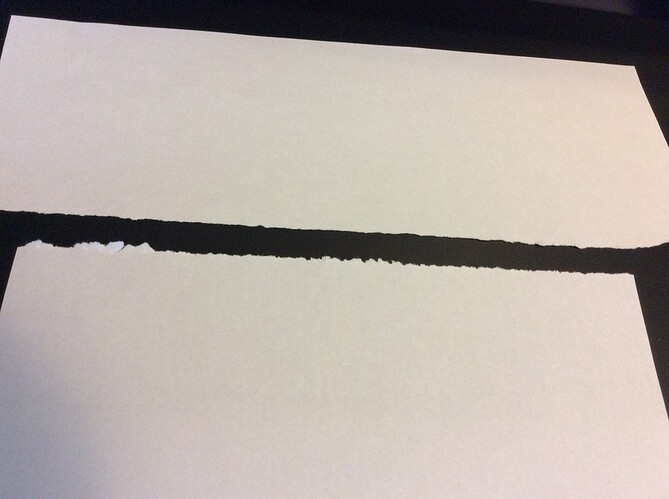Im not sure if it applies to all paper, like handmade paper or modern vellum, but the manufacturing process makes almost all the paper fibers lay in the same direction, so it ends up with a grain like wood. Or fabric? Paper obviously tears easily in all directions, but tears more neatly if you tear with the grain than against. I think some wood might be similar, where it splinters more when cut against the grain?
Here’s a photo of just cheap computer paper. I didn’t fold or score either piece ( just tore it over the edge of my desk to keep it straight). The top piece is torn with the grain and the bottom piece is against the grain.
With folding, I’m a little shakier on the specifics. I think you’re supposed to fold with the grain to get a stronger cleaner fold. If you fold against the grain, it’s supposedly weaker, and you will sometimes tear things up when you score it (by which I mean score it with a bone folder or your finger nail or something).
I’m sure there are practical applications for this with cutting dashed lines, but I’ve never really paid close enough attention to when folds tear - I think I just always assumed I’ve fiddled with them too much. If you want to run some experiments, 8.5 by 11 paper is usually long grain. If you fold the paper parallel to the long side, you’ll fold with the grain. If you fold it like a card, you’ll fold against the grain. The Internet is telling me that the last paper dimension notes the grain (so, on 12 x 9 paper it would be the short side, I guess), but I’m not sure I’d bet my life on that.
